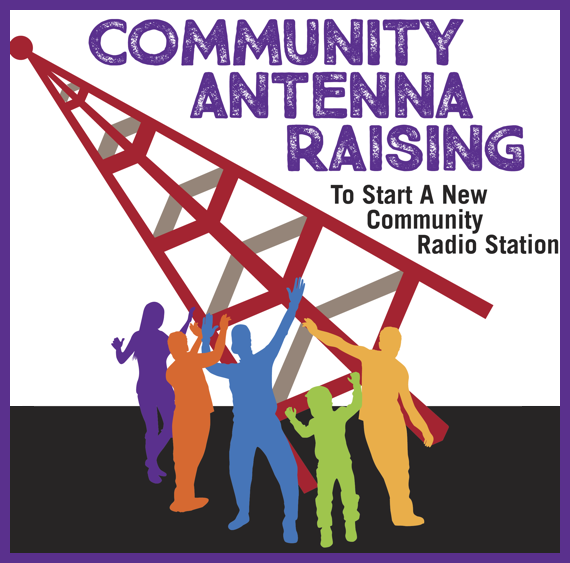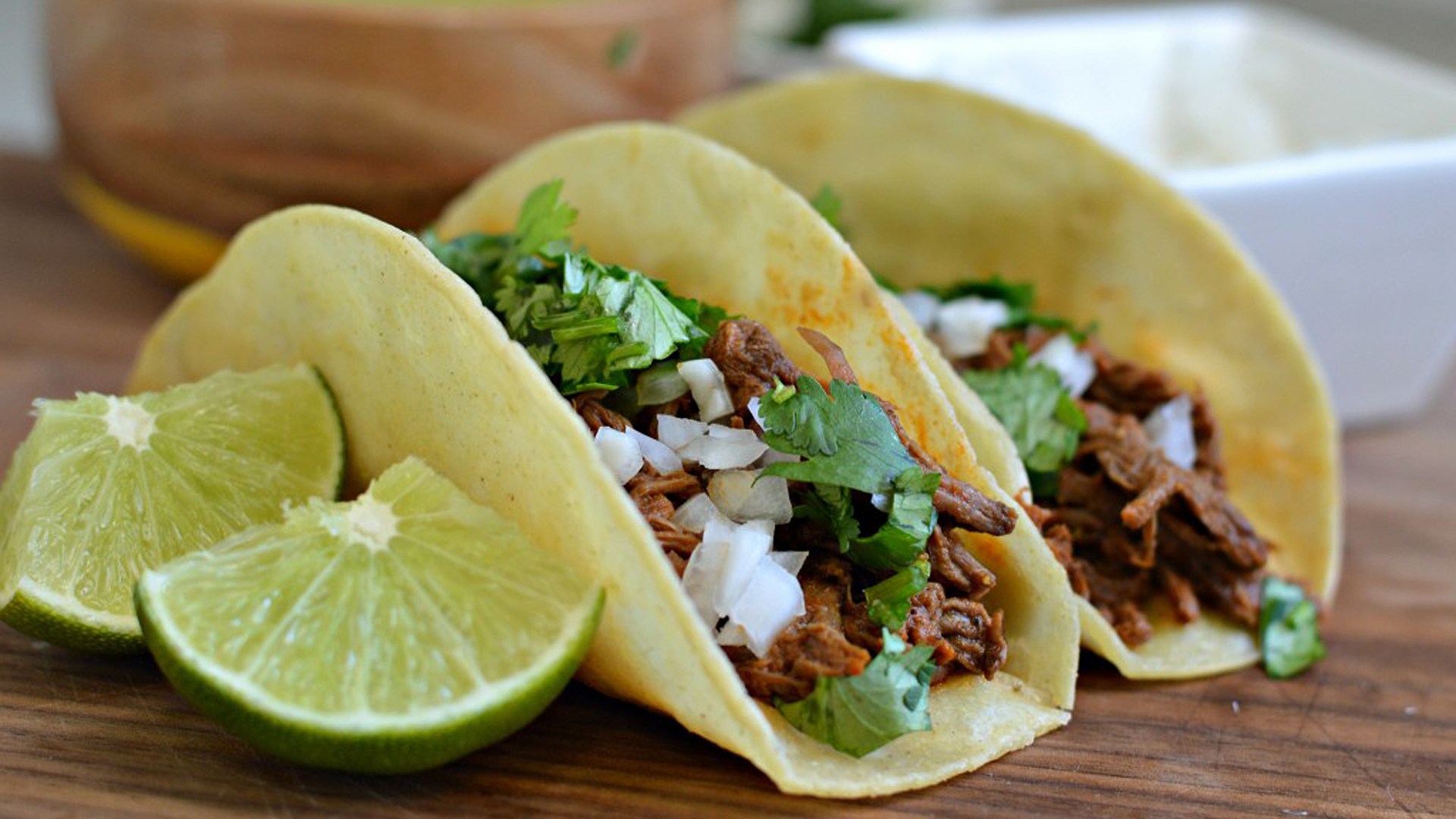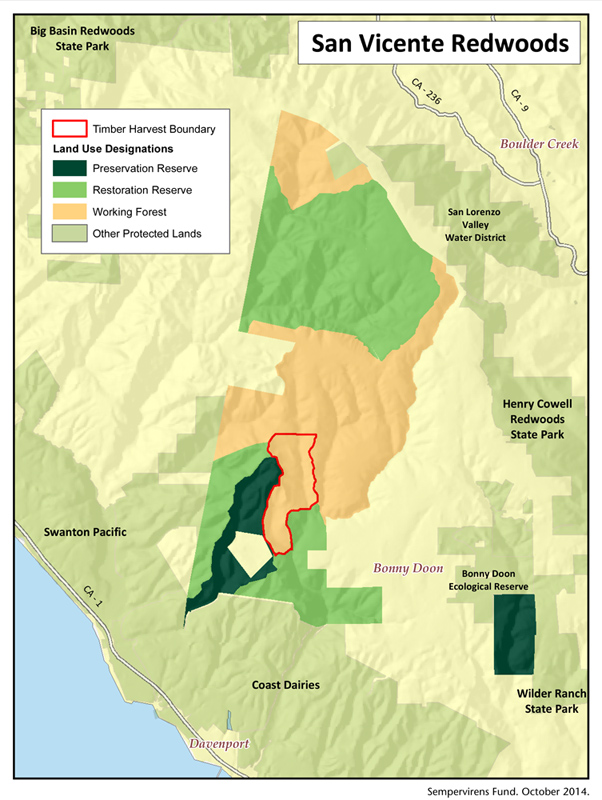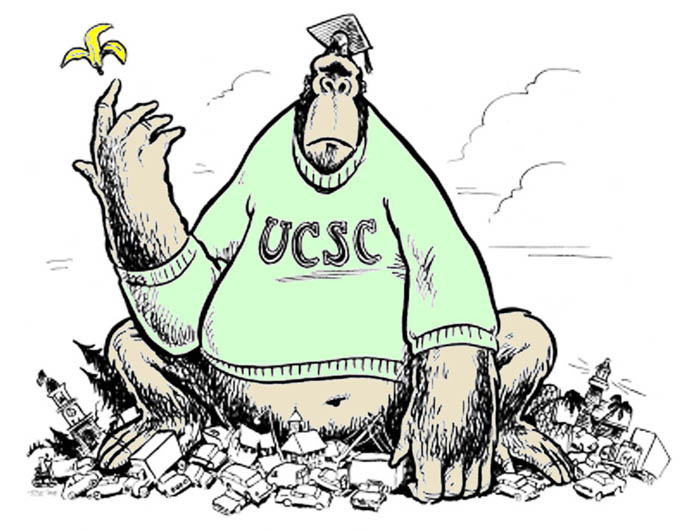 May/June 2018 issue |
|
Not
Squidding Around: Wednesday May 9th, 2018, 7:30 p.m. Bonny Doon School Multipurpose Room, Pine Flat Road & Ice Cream Grade |
|
Not Squidding
Around: New Radio Station, KSQD-FM, Gets Ready to
Launch By Rachel Goodman
 A local
nonprofit has been working hard behind the scenes to
bring to the airwaves a new community radio station
for Santa Cruz County. Natural Bridges Media
incorporated in December 2017 as a 501(c)(3), but its
members have been raising funds to buy a radio license
and transmitter to fill a much-needed gap left by
KUSP-FM when it left the airwaves back in August
2016. A local
nonprofit has been working hard behind the scenes to
bring to the airwaves a new community radio station
for Santa Cruz County. Natural Bridges Media
incorporated in December 2017 as a 501(c)(3), but its
members have been raising funds to buy a radio license
and transmitter to fill a much-needed gap left by
KUSP-FM when it left the airwaves back in August
2016. Community radio differs from NPR stations (often called “public radio”) because it has an open door and open ear to the community, presenting mostly locally originated/focused shows generated by residents and aimed at their interests. While the station will air some nationally syndicated shows such as Democracy Now, Your Call, and Thom Hartmann show, it will rely on local volunteers to create much of the content. The new station, dubbed K-SQUID (KSQD-FM) has as its mission “…to build community through broadcasts, podcasts, training programs and community events that highlight the uniqueness of Santa Cruz County.” What is it that makes our community unique? Is it the mountains and oceans, our off-beat and independent attitude toward life, our various sub-cultures, or…? For Bonny Doon residents keen on getting emergency updates during fires, landslides, floods and the occasional tsunami, the station plans on broadcasting emergency reports during such events. The station plans on covering local issues such as land use, environment, transportation, housing, politics, and more through public affairs and news programs. It also plans programs for youth, children and seniors, shows highlighting our local music scene, and classical, jazz to folk and beyond. Listeners can expect some of their favorite local shows from the KUSP days to return as well as a plethora of new voices (perhaps yours?). A program committee is currently reviewing proposals. The station is eying a property in the Harvey West neighborhood for its studios. The transmitter will be on UCSC’s property and the antenna on KZSC’s tower. The mighty K-Squid intends to launch on the airwaves in July/August of 2018. There are many opportunities for Santa Cruz County residents to get involved in the station, on or off the air. KSQD is looking for folks with graphic arts skills to create a squid-themed logo, help in designing an electronic press kit, and people to help with outreach to segments of the community who may want to apply for shows. Natural Bridges Media is currently seeking to raise $83,000 toward its first year of operations. So far it has raised $265,000 for the license/transmitter and $17,000 toward Phase II of its operating budget. Anyone wishing to get more information or support the station can go to www.centralcoastcommunityradio.org. I am the chair of the newly formed Natural Bridges Media board of directors. My philosophy is that radio is just plain fun. It happens live and in real time, and it is has the potential to unite people of different backgrounds and experiences. Rachel Anne Goodman has worked as a writer and radio producer for much of her career, earning a Peabody Award for her work as Managing Editor for NPR’s The DNA Files radio series. She writes and broadcasts about environmental, social justice and sustainable agriculture topics. Her most recent radio documentary was the four-part series, “Pastures of Plenty: A History of California’s Farmworkers,” which aired in the U.S. and Canada. She has hosted live radio interview shows in Virginia, Kentucky and California, her most recent being KUSP, Santa Cruz’s Talk of the Bay, where she interviewed thought leaders on the news of the day. Goodman served for three years as District Director/Press Secretary for then Assembly member, now Senator, Bill Monning (D-Carmel), where she took the policy lead on agriculture and environmental issues. She has also served as Executive Director of The Tannery Arts Center, an 8.3-acre arts facility on River St. In addition to teaching at Cabrillo Community College, Goodman works as a consultant to national and statewide non profits, helping further their impact and message through strategic communications and good writing. A Bonny Dooner, she graduated from UC Santa Cruz with a degree in Environmental Studies.
at the First Annual Bonny Doon Taco Social on August 25th  Several Bonny Doon organizations are combining forces to put on a Taco Social for the benefit of the Bonny Doon Volunteer Fire and Rescue Team. In addition to delicious tacos and associated refreshments, there will be live music, activities for the kids, and lots of information about how to prepare for (or avoid) a disaster. Folks from the following organizations will be sharing information: Bonny Doon Volunteer Fire and Rescue, Community Emergency Response Team (CERT), Fire Safe Council, CalFIRE, PG&E, Animal Rescue, Local Ham Radio operators, Friends of the Bonny Doon Ecological Reserve, and the Rural Bonny Doon Association. If you own a business in Bonny Doon associated with safety preparedness, such as tree trimming, brush clearing or chipping, fire-safe landscaping, or green-waste hauling, and would be willing to donate between two hours to a day of your services, the organizers would like to offer your donated service as part of the silent auction. This will be a great opportunity to talk to local residents and publicize your services. This gala event will be held from 2 to 7 PM, so save the date, and we will have more details coming soon. To donate your services or if you have any questions, please contact BonnyDoonCERT@gmail.com.
The meeting was also an effort to generate support for Measure U, on the Santa Cruz City June 5 ballot. Measure U is aimed at sending a strong message to the University of California Regents and Office of the President that Santa Cruz simply can’t absorb that many students. Unfortunately, because UCs are state constitutionally exempt from local land use regulations, the measure has no legal force. Among the speakers at the April 19 meeting were Supervisor Ryan Coonerty, Santa Cruz City Councilmembers Cynthia Mathews and Chris Krohn, Save Santa Cruz leader and former County Supervisor Gary Patton, Ted Benhari of the RBDA, John Aird of CLUE, local Sierra Club Chapter Chair Gillian Greensite, UCSC Professor Emeritus Jim Clifford of the East Meadow Action Committee, UCSC Student Union Assembly president Chayla Fisher and Supervisor Coonerty’s long-time aide Andy Schiffrin. Coonerty described UCSC growth as “the single biggest issue facing our community,” that will take a “more sophisticated effort to combat.” The push for the growth, he said, is coming from the state legislature, so it will be important to get Assemblyman Mark Stone and Senator Bill Monning to help in the effort. Hypocritically, the legislature has consistently cut its financial support for the UCs over the years. UCSC growth is the leading factor in making Santa Cruz the third least affordable city for housing in the U.S. The University has been stretched beyond its capacity, and the quality of education has diminished. Students frequently are unable to get the classes they need to graduate on time (making their education much more expensive, and increasing the number enrolled), class sizes are increasing, professor to student ratios are spiraling upward, students are living three or four to a room intended for two, or in dormitory lounges (even in their cars!), library seats are scarce, and buses and roads are crammed to capacity, making it hard to get to class on time. Why is halting UCSC growth important to Dooners? Bonny Doon is a convenient place to live if you’re commuting to UCSC. Obviously, students, faculty and staff compete for our housing stock, and there are already two dormitory-like houses with upward of 15 single bedrooms, built for and occupied by students, much to the annoyance of neighbors. Much if not all of the growth will take place on the pristine and environmentally important North Campus, part of the green buffer between town and Bonny Doon. There could wind up being more than 4 million square feet of buildings there, the equivalent of roughly 35 Costco size warehouse stores. There are plans for a corporation yard in that area, with an entrance from Empire Grade, which means trucks and other large vehicles going up and down Empire Grade on the twisty, dangerous Cave Gulch section. The new road could possibly be used as another campus entrance and exit, with the resultant traffic impacts. The David vs. Goliath fight to stifle UCSC growth under its new Long Range Development Plan will go on for the next several years. It will take a lot of political will, public participation and money to fight it. Besides our local officials, the citizen group CLUE will be at the tip of the spear. You can participate, or at least follow along, by joining the Facebook group, CLUE (Coalition for Limiting University Expansion).”
Following the presentations from the RBDA and CESC to the County Planning Commission arguing for stronger protections at the meeting on March 14th, the Planning Commission held their decision over to the March 28th meeting where the Commission voted to pass 18 resolutions that offer substantial protections for the environment and neighborhoods, while allowing commercial cultivation and processing. The details are contained in dozens of pages of complicated intertwining regulations (types of cannabis licenses, who can obtain these licenses, allowable operations, detailed requirements regarding zoning, property size, access for firefighting, water storage, and setbacks). These recommendations were then heard by the Board of Supervisors at a special meeting held on April 9th. The Board of Supervisors in turn approved all but one of the recommendations with some minor changes to two of them.  Some of the key
points of what the Board approved are that within
the Coastal Zone plus a buffer zone extending 1-mile
inland (CZ+1), commercial cultivation and processing
will not be permitted except on parcels that are
zoned A (Agriculture) or CA (Commercial
Agriculture). Outside of CZ+1, commercial operations
will be permitted on A and CA parcels, some
Residential Agriculture (RA) parcels as small as 2.5
acres (when various conditions are met, as detailed
below), Timber parcels (TP) that have been
cultivated continuously since before 2013, and some
Special Use parcels. The CZ+1 covers most but not
all of Bonny Doon. Some of the key
points of what the Board approved are that within
the Coastal Zone plus a buffer zone extending 1-mile
inland (CZ+1), commercial cultivation and processing
will not be permitted except on parcels that are
zoned A (Agriculture) or CA (Commercial
Agriculture). Outside of CZ+1, commercial operations
will be permitted on A and CA parcels, some
Residential Agriculture (RA) parcels as small as 2.5
acres (when various conditions are met, as detailed
below), Timber parcels (TP) that have been
cultivated continuously since before 2013, and some
Special Use parcels. The CZ+1 covers most but not
all of Bonny Doon. By allowing commercial grows in R or RA zones, Santa Cruz County still remains one of the laxest counties in the state. However, our 2.5-acre minimum size comes with substantial restrictions including only “grandfathering in” growers who were active before 2013, lack of complaints from neighbors, meeting fire prevention requirements, and required setbacks from creeks, neighboring dwellings, and schools. We would have preferred tougher restrictions, in particular in regards to any commercial cannabis activity on parcels zoned RA, and we would have preferred no grows on timber production parcels, but we are thankful that the Board of Supervisors accepted nearly all of the protections recommended by the Planning Commission.

photo by Kendra
Turk-Kubo
By Julie Knight Friends of Bonny Doon Ecological Reserve is an informal organization of volunteers from the Bonny Doon community and others with the goal of making the Reserve a safe and joyful experience. Contributed by Julie Knight Last winter brought down yet another fire casualty. Her base had turned to powder and she had stood long enough. She landed across the trail, making passage all but impossible for most of us. That event is what started the Friends of Bonny Doon Ecological Reserve. Reaching out to the community for help in removing this old decayed ponderosa brought Dave and Mary Jessen and I together. We talked and thought maybe, just maybe, there were others also concerned with the state of the Reserve. Approximately 30 people came to share their ideas and listen to the three State Fish and Wildlife officers speak at our first meeting. I was amazed by how much talent we have in our community and how many of us give freely of our time and expertise. After the first meeting, we identified a “steering” committee, which determined the directions the Reserve needed to go. During our next meeting on April 10, two primary topics were discussed for the purposes of creating a proposal of work to be sent to Fish and Wildlife for approval. The two topics were the replacement of the informational kiosk, and clearing and improving the trails. Currently we are in the process of naming the trails and gathering trail groomers. At this time, Fish and Wildlife, are deciding which of the two outer loop trails will be kept open along with the trail that parallels Martin Rd. We are also starting to gather trail groomers. At this time, we have only one recognized endangered plant expert but I’m waiting to hear from another who will also accompany trail groomers to make sure all endangered vegetation is protected. We want to thank the Fish and Wildlife Warden who is responsible for the Ecological Reserve, Kaleb Eye, for taking the time to attend our meeting. Anyone who sees illegal activity in the Ecological Reserve is asked to call the CALTIP line at 888.334.2258. Please help us keep Bonny Doon unique. To learn more or get involved, follow the Friends of Bonny Doon Ecological Reserve Facebook group.
 The Land Trust of Santa Cruz County (LTSCC) has just released their public access plan for San Vicente Redwoods (SVR). SVR is an approximately 8,500-acre property located between Davenport and Bonny Doon that was purchased in 2011 by the Peninsula Open Space Trust, Sempervirens Fund, and Save the Redwoods League, and the LTSCC. Their vision was to ultimately protect this property for future generations while allowing sustainable land use and activities, including recreation, and research/education alongside preservation, restoration and timber harvesting. The LTSCC public access plan describes an adaptive management approach, where access to the property will occur in phases, along with active monitoring at each phase and well-defined metrics for evaluation. Access to the property (parking/staging and trail head), will be across from Crest Ranchanch on Empire Grade, which will be opened as part of the first phase with a capacity of 25 to 40 cars. The parking lot is anticipated to have a kiosk and bathrooms and will be secured at night. There will be no allowed overnight use of the property. LTSCC will be instituting a permit system, to register all users. They will be partnering with the County Sheriff’s Office, CalFIRE and County Parks for law enforcement, emergency response, and stewardship. Their planning document is available at landtrustsantacruz~publicreview. Construction of trails is anticipated to begin in the spring of 2019, opening phase I access by the end of 2019. LTSCC hosted a series of informational public meetings at Bonny Doon Elementary in mid-April and it is still possible to schedule a neighborhood meeting by contacting Bryan Largay at Bryan.largay@landtrustsantacruz.org. |
 Are you an RBDA Member? Join the conversation, get news updates on the Facebook page exclusively for RBDA members: RBDA, Rural Bonny Doon Association |
|
Support Our Sponsors! Frans Lanting Gallery
Become
One of Our Sponsors
|
|
The
Highlander Bonny Doon's voice
in preserving our special quality of life, Send mail
correspondence to the Highlander Editor at the above
address, Support the RBDA - Renew Your Membership: all 1-year memberships expire on January 31st. Your continued support enables the RBDA Board to work on issues critical to Bonny Doon, to hold meetings to educate and get feedback regarding those issues, and to publish The Highlander newsletter. Some people may not understand that receiving The Highlander in the mail doesn’t mean you are a current RBDA member. To reach the whole community we mail The Highlander to all mailboxes in Bonny Doon. So unless you joined for multiple years, all 1-year RBDA memberships will expire on Jan. 31, 2016. To continue to support the RBDA, we need you to renew now for the 2016 year. Details are here. Dues and donations go mainly to printing and mailing The Highlander, and rent and insurance for the public meetings at the school. |
|
Ideas for RBDA Meeting
Topics? We are always open to
suggestions for interesting programs and speakers at
our bimonthly (except July) RBDA public meetings.
What are
you interested in? Local flora and fauna, gardening,
environmental and political issues, Bonny Doon history
or geology, public safety?
What were
some of your favorite speakers or presentations at
past RBDA meetings? Were
there any that you would like us to repeat?
Please email us with your ideas and
comments at board@rbda.us. |
|
The Bonny Doon Planning District  If you live in or own
property within this district, roughly from Empire
Grade to the ocean and from San Vicente Creek to the
City of Santa Cruz border, you are eligible to be an
RBDA member. Please support the RBDA!
Annual dues are used primarily for printing and mailing The Highlander, your voice for keeping Bonny Doon rural and natural. Click here for details! Those who make additional contributions qualify as: CONTRIBUTORS ($ 25+ dues) SUSTAINERS ($50+ dues), or PATRONS ($ 100+ dues)  Cemex/Joby
limestone pit, photo by Ted Benhari
|

